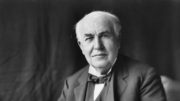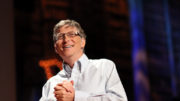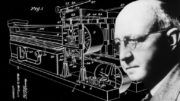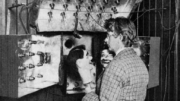 The story of Henry Ford is not of a prodigy entrepreneur or an overnight success. Ford grew up on a farm and might easily have remained in agriculture. But something stronger pulled at Ford’s imagination: mechanics, machinery, understanding how things worked and what new possibilities lay in store. As a young boy, he took apart everything he got his hands on. He quickly became known around the neighbourhood for fixing people’s watches.
The story of Henry Ford is not of a prodigy entrepreneur or an overnight success. Ford grew up on a farm and might easily have remained in agriculture. But something stronger pulled at Ford’s imagination: mechanics, machinery, understanding how things worked and what new possibilities lay in store. As a young boy, he took apart everything he got his hands on. He quickly became known around the neighbourhood for fixing people’s watches.
In 1896, Ford invented the Quadricycle. It was the first “horseless carriage” that he actually built. It’s a far cry from today’s cars and even from what he produced a few years later, but in a way it’s the starting point of Ford’s career as a businessman. Until the Quadricycle, Ford’s tinkering had been experimental, theoretical-like the gas engine he built on his kitchen table in the 1890’s, which was just an engine with nothing to power. The Quadricycle showed enough popularity and potential that it launched the beginning of Ford’s business ventures.
Ford Motor Company was founded on June 16, 1903. The first Ford, the Model A, was being sold in Detroit a few months later. When founded, Ford Motor Company was just one of 15 car manufacturers in Michigan and 88 in the US. But as it began to turn a profit within its first few months, it became clear that Henry Ford’s vision for the automotive industry was going to work, and work in a big way. During the first five years of Ford Motor Company’s existence, Henry Ford, as chief engineer and later as president, directed a development and production program that started in a converted wagon shop. Henry Ford’s insistence that the company’s future lay in the production of affordable cars for a mass market caused increasing friction between him and the other investors. As some left, Ford acquired enough stock to increase his own holdings to 58.5 percent. Henry Ford became president in 1906, replacing John S. Gray, a Detroit banker who had served as the company’s first president.
The years between the world wars were a period of hectic expansion. In 1917, Ford Motor Company began producing trucks and tractors. In 1919 a conflict with stockholders over the millions to be spent building the giant Rouge manufacturing complex in Dearborn, Michigan led to the company becoming wholly owned by Henry Ford and his son, Edsel, who then succeeded his father as president. After Edsel Ford passed away in 1943, a saddened Henry Ford who had sufferer a stroke in 1938 resumed the presidency. Henry Ford resigned for the second time at the end of World War II in 1945, he later died from heart failure in April 1947. His eldest grandson, Henry Ford II, became president on Sept. 24, 1945. and remained in that position until 1960 and then retained various executive roles in the company up until his death in 1987.
Now, at the beginning of its second century, William Clay Ford Jr. (great-grandson of Henry Ford) has been named CEO of Ford Motor Company, the first family member to hold the position in more than 20 years.




